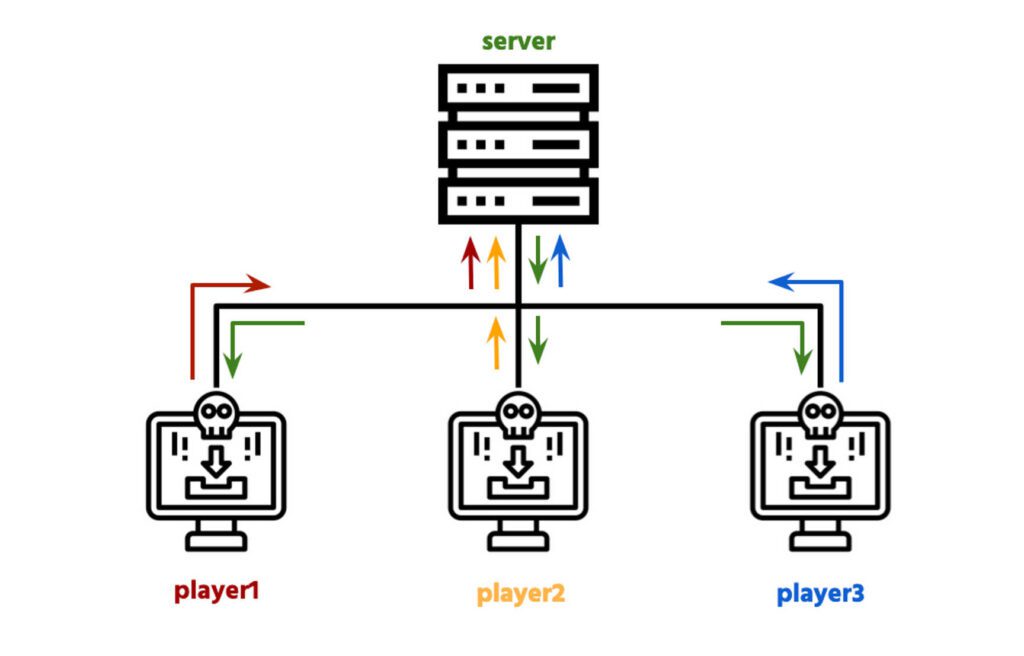JavaScript frameworks are becoming an essential tool for building cross-platform multiplayer games that work seamlessly on various devices. One advantage of using JavaScript frameworks is that developers can rely on their pre-written code to handle basic functionalities, which speeds up game development. The article discusses five essential JavaScript frameworks necessary for building multiplayer games, namely Phaser, Three.js, Socket.io, Babylon.js, and Pixi.js. The article also provides a step-by-step guide on how to create a multiplayer game using the Phaser framework, which includes designing the game, setting up a development environment, implementing the multiplayer functionality, enhancing graphics and audio, and testing and deploying the game.
Building Multiplayer Games with JavaScript Frameworks
Introduction
Building multiplayer games with JavaScript frameworks is an exciting endeavor. In the world we live in, where online gaming has become so popular, it is essential to know how to build multiplayer games using JavaScript frameworks. JavaScript frameworks are becoming an integral part of game development, with their ability to allow the creation of cross-platform games that can run on various devices. This article explores the use of JavaScript frameworks in building multiplayer games and outlines some of the essential frameworks necessary for game development.
What is JavaScript Framework?
A JavaScript framework is a tool or library that extends standard JavaScript functionality to help developers write more organized and efficient code. It provides a set of reusable modules, functions, and libraries that make the tasks of web development easier and faster. One of the significant advantages of using JavaScript frameworks is that it allows for faster development of games. Instead of writing code from scratch, developers can focus on designing the game and rely on the framework’s pre-written code to handle basic functionalities.
Essential JavaScript Frameworks for Building Multiplayer Games
1. Phaser
Phaser is an open-source framework that has gained popularity among game developers due to its ease-of-use and flexibility. The framework offers a wide range of features for game development, including high-performance WebGL, canvas rendering, physics engines, and audio implementation. Phaser is beginner-friendly, and it also provides an active community to get support and share ideas. A significant advantage of using Phaser is that it supports multiplatform development, meaning it allows the building of games that can run on different platforms such as the web, mobile devices, and desktop.
2. Three.js
Three.js is a JavaScript library that specializes in 3D graphics and animations, making it ideal for building multiplayer games with 3D animations. It provides a rich set of functions and tools that enable developers to create realistic and impressive 3D graphics environments. Three.js offers WebGL rendering, which provides high-performance 3D graphics that run smoothly on web browsers. The library is versatile, allowing developers to create games in different genres such as action, adventure, and puzzle games.
3. Socket.io
Socket.io is a library that enables real-time communication between clients and servers. It provides an easy-to-use API that allows developers to create robust, real-time multiplayer games. The library’s primary goal is to ensure communication happens in real-time, reducing delays and lags that might negatively affect game performance. Socket.io is highly scalable, meaning it can accommodate multiple users and support a wide range of devices.
4. Babylon.js
Babylon.js is a JavaScript library that offers 3D graphics and game development capabilities. The library provides a set of features that allows developers to create sophisticated multiplayer games, including physics engines, audio, and animation. Babylon.js is highly optimized for performance and runs efficiently on both desktop and mobile devices. The library also provides extensive documentation and a large community of users that can provide support and share ideas.
5. Pixi.js
Pixi.js is an open-source 2D rendering library that allows rapid creation of lightweight and fast web games. It is a popular choice for building casual games and offers a range of features such as interactive graphics, audio, and animation. Pixi.js is highly optimized for performance and works well on different devices. The library provides an active community for support and collaboration.
Building Multiplayer Games: Step-by-Step
The following is a step-by-step guide on how to create a multiplayer game using the Phaser framework:
1. Design the Game: Start by designing the game’s concept, mechanics, and features.
2. Install Phaser: Install Phaser by downloading it from the official website or using a package manager such as npm.
3. Set Up the Environment: Set up the development environment by creating a new project and configuring it with the necessary settings.
4. Create the Game World: Use the Phaser framework’s APIs to create the game world, including player characters, game objects, and game physics.
5. Implement the Multiplayer Functionality: Integrate Socket.io to enable real-time communication between game clients and servers. Use the library’s APIs to send and receive game data between clients.
6. Enhance Graphics and Audio: Use Phaser’s APIs to add graphics, sound effects, and music to the game.
7. Test and Deploy: Test the game and deploy it to a web server or platform of your choice.
Conclusion
Building multiplayer games with JavaScript frameworks is an exciting endeavor that requires a good understanding of game mechanics and the frameworks. The five frameworks discussed in this article provide a range of functionalities and features necessary for building multiplayer games. Developers should choose a framework that matches their game’s concept, mechanics, and available resources. Building multiplayer games with JavaScript frameworks requires patience, creativity, and a passion for gaming. With the right mindset and tools, game development can be a fulfilling and rewarding experience.
